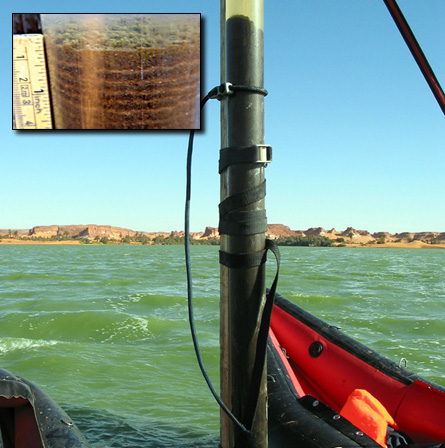The Sahara didn’t become one of the hottest and driest regions on Earth in a hurry. In fact, the climate shift that made the desert so arid took many centuries — a finding that contradicts previous studies that hint at a relatively sudden drying. The new study could affect how scientists refine models of climate change.

About 14,500 years ago, a few millennia before the end of the last ice age, shifting weather patterns ushered in a wet spell — often called the African Humid Period — in northern Africa. During that time, much of the region was a tropical savannah dotted with wetlands and lakes, says Stefan Kröpelin, a geologist at the University of Cologne in Germany. Analyses of sediment cores drilled from deep waters of the North Atlantic, among other research, have shown a sudden increase in the amount of Saharan dust blown off Africa about 5,500 years ago. Many scientists have attributed this increase to a sudden shift in climate, he notes. Due to the Sahara’s constantly shifting sands, there are few geological records of the region’s climate during the past few millennia, says Kröpelin.
Now, he and his colleagues have analyzed sediment cores drilled from LakeYoa, one of the few Saharan bodies of water that persisted since the end of the ice age. No streams flow into the 3.5-square-kilometer, 26-meter-deep lake in northern Chad, and precipitation in the region is scarce indeed. However, prodigious amounts of groundwater seep into the lake’s basin to replenish the water lost to evaporation — an estimated 6 meters in depth each year.
LakeYoa’s sediments, which build up at a rate of about 1 millimeter each year, are an uninterrupted chronicle of the region’s climate since the last ice age, says Kröpelin. Long-term patterns in the number and type of aquatic creatures that died and fell to the lake floor each year reveal the lake’s evolution: Once filled with fresh water, the lake is now five times saltier than the ocean. More telling, however, is the long-term pattern of pollen and spores that the researchers found in that record.
Around 6,000 years ago, the area surrounding the lake was a savannah with acacia trees, shrubs and ferns — a grass-dominated mix of plants now found only in the wetter clime about 300 kilometers to the south. Then, around 5,600 years ago, the numbers of trees began to decline and plants typical of a semiarid environment proliferated, the researchers suggest. By 4,300 years ago, each year’s accumulation trapped less grass pollen but increasing amounts of dust and windblown sand. About 2,700 years ago, the mix of desert plants that surrounds the lake today was in place.
The pattern and pace of pollen progression clearly indicates that climate change in the region was steady, not sudden, Kröpelin and his colleagues report in the May 9 Science. Annual rainfall in the region gradually declined from about 25 centimeters 6,000 years ago to about 15 centimeters 4,300 years ago, they speculate. Then, the decline in rainfall slowed somewhat, reaching the current yearly average of 5 centimeters about 2,700 years ago.
Why there was a sudden rise in dust blowing from the Sahara as a whole 5,500 years ago “is still a mystery,” says Jonathan A. Holmes, a paleoclimatologist at University College London. The relatively smooth rise in dust collected in LakeYoa’s sediments, as well as a gradual decline in the region’s vegetation cover, suggest that the monsoons that bring rain to the area slowly weakened between 6,000 and 2,700 years ago, as many climate models suggest.






